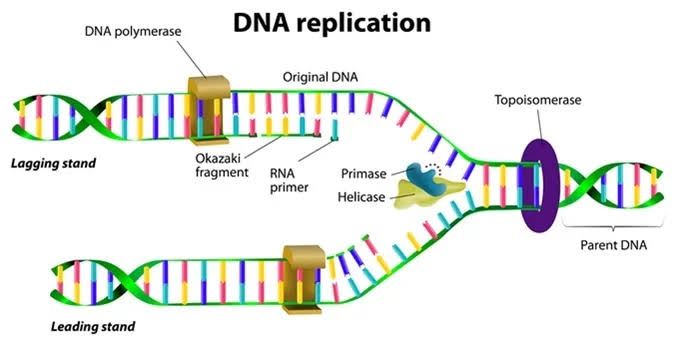
Modifying enzymes are a broad category of enzymes that alter the structure of nucleic acids, primarily DNA and RNA. These modifications can include the addition or removal of specific chemical groups, which can affect the stability, function, and interaction of nucleic acids with other molecules. Common types of modifying enzymes include polymerases, ligases, alkaline phosphatases, and recombinases.
1. Polymerases
Polymerases are enzymes that synthesize nucleic acid polymers by adding nucleotides to a growing chain. They play a crucial role in DNA replication and RNA transcription. There are two main types of polymerases:
- DNA Polymerases: These enzymes synthesize DNA from deoxyribonucleotides during DNA replication. They require a template strand and a primer with a free 3’ hydroxyl group to initiate synthesis. Examples include:
- DNA Polymerase I: Involved in DNA repair and removing RNA primers.
- DNA Polymerase III: The primary enzyme for DNA synthesis in prokaryotes.
- RNA Polymerases: These enzymes synthesize RNA from ribonucleotides using a DNA template during transcription. They do not require a primer to initiate synthesis. An example is:
- RNA Polymerase II: Responsible for synthesizing mRNA in eukaryotic cells.
2. Ligases
Ligases are enzymes that catalyze the formation of covalent bonds between two nucleic acid fragments, effectively “gluing” them together. This process is essential for DNA replication and repair, as well as for constructing recombinant DNA molecules in molecular biology applications. Ligases work by forming phosphodiester bonds between the 3’ hydroxyl end of one nucleotide and the 5’ phosphate end of another. A well-known example is:
- DNA Ligase I: This enzyme plays a critical role in sealing nicks in the sugar-phosphate backbone during DNA replication and repair processes.
3. Alkaline Phosphatases
Alkaline phosphatases are enzymes that remove phosphate groups from nucleotides or nucleic acids, typically acting on the 5’ ends of DNA or RNA strands. This dephosphorylation process is important for preventing self-ligation during cloning procedures, as it inhibits the rejoining of vector molecules without insertions. Alkaline phosphatases can also be used to prepare samples for downstream applications such as sequencing or labeling. A commonly used alkaline phosphatase is:
- Calf Intestinal Alkaline Phosphatase (CIP): It is often employed in molecular biology protocols due to its ability to efficiently dephosphorylate both DNA and RNA.
4. Recombinases
Recombinases are specialized enzymes that facilitate site-specific recombination events within DNA molecules. They recognize specific sequences within the genome and catalyze the exchange or rearrangement of genetic material at these sites. Recombinases play vital roles in various biological processes including genetic diversity, repair mechanisms, and integration of viral genomes into host genomes. Key functions include:
- Translocation, where segments of DNA are moved from one location to another.
- Inversion, which involves flipping segments of DNA.
- Cassette exchange, allowing for targeted integration or deletion of genetic elements.
Examples include:
- Cre Recombinase: Used extensively in genetic engineering to induce recombination at loxP sites.
- Flp Recombinase: Utilized for site-specific recombination at FRT sites.
The combined actions of these modifying enzymes enable precise manipulation and modification of genetic material for research, therapeutic applications, and biotechnology innovations.







